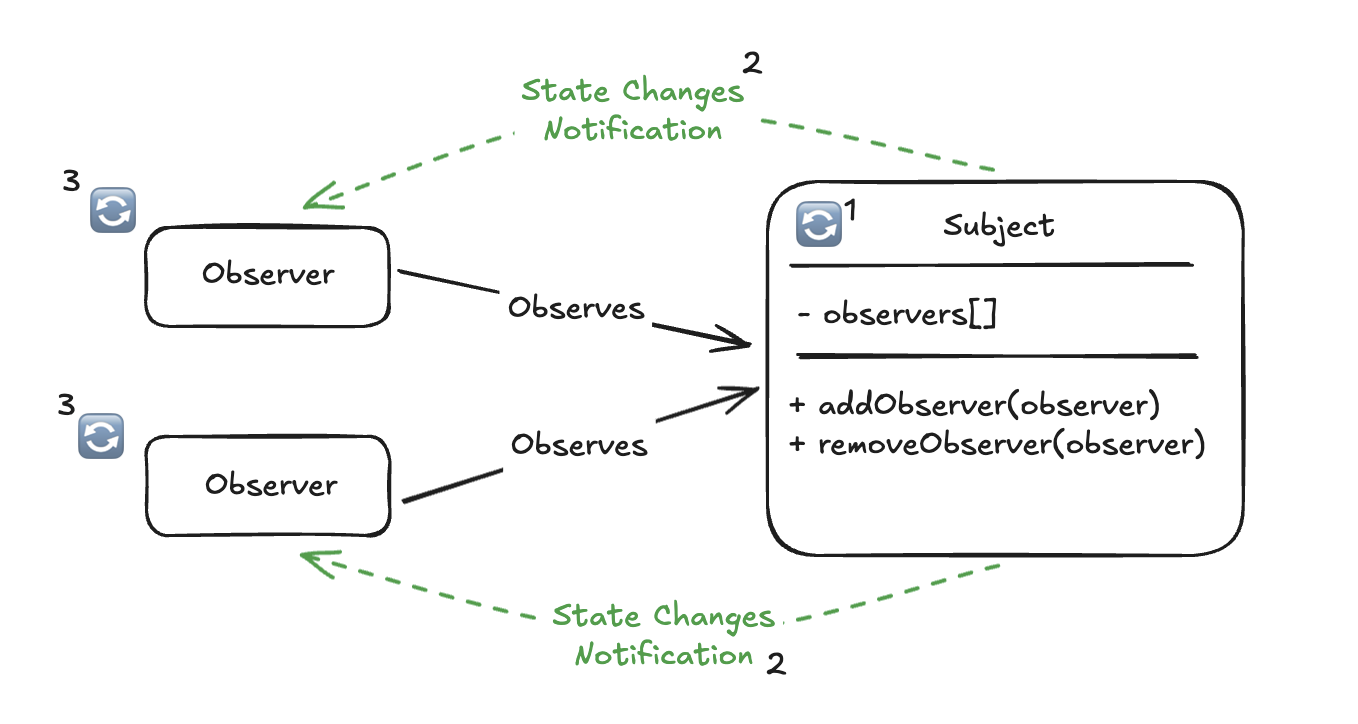Appearance
Behavioral Patterns
Last Updated: March 22, 2025
Behavioral patterns focus on communication and responsibilities between objects, making interactions more flexible and organized.
WARNING
I am only sharing the patterns I have interacted with!
TL;DR
Observer: Notifies multiple objects of state changes in a central object, great for event-driven systems.State: An object changes its behavior dynamically by delegating actions to its current state object.
Observer Pattern
Definition
The Observer Pattern is a behavioral design pattern that defines a subscription mechanism to notify one or multiple objects about any events that happen to the object they’re observing.
Think of YouTube:
- A YouTube channel is the Subject
- The subscribers are the Observers
- When the channel uploads a new video, all subscribers get notified!

Flow
State Change: TheSubject's state changes (e.g., data is updated).Notification: TheSubjectautomatically notifies all registeredObservers.Observer Reaction: EachObserverreceives the update and reacts accordingly (e.g., refresh UI, show message, update model).
State Pattern
Definition
The State Pattern allows an object to change its behavior when its internal state changes — it’s like the object is switching between different “modes”.
Imagine your pattern as a traffic light:
- It can be red, yellow, or green state.
- The behavior (what it allows cars to do) changes depending on its current state.
- Thus, if the light is red, cars cannot move. When it goes green, they move!
Flow
Context Set Up: The object is in an initial state.Action Performed: TheSubjectnotifies all registeredObserversof the change.State Change: The current state object handles it and may change the context’s state.Behavior Switch: The object now behaves differently because it’s in a new state.

